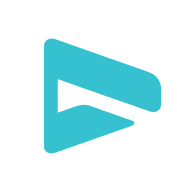Introduction
There are so many reasons why being active on LinkedIn is a good idea for your government contracting strategy but to avoid getting on my soapbox, I’ll cover the most important things to know about the free LinkedIn version that you’ll thank me later for (should you take the advice.)
Starting with the overarching premise, the government contracting arena is more about relationships (80%) than solicitations (20%). It’s also important to note that my experience comes from service-based businesses. Not to say it doesn’t work in the products realm, I just believe in full transparency. Try it for yourself and let me know!
Business owners may or may not be the best at sales and marketing, though most sales professionals already know how to close a deal and wouldn’t likely disagree with any of what you’re about to read.
The rest of you, brace yourselves!
And wipe off that “I-don’t-have-time” look and hear me out.
The digital transformation of the government includes social media, believe it or not. The shift seemed to start when Covid-19 hit and the feds found themselves short of sources for procurement of goods and services, as well as an exponential amount of fraud taking place. I’m sure there were other reasons, however, I’ve not taken a poll to date.
Faced with a shortage of sources with many small businesses closing their doors, they often had to use untraditional methods of performing market research, which included going outside of the System for Award Management (SAM) and/or the Dynamic Small Business Search (DSBS) to locate established commercial companies, which absolutely included LinkedIn.
Keep in mind that not all professionals have a presence on social media, however, if they have a professional LinkedIn profile, it’s likely they keep it updated. This becomes valuable when you’re in one of those industries where your end-user is outside of the usual suspects. Additionally, it’s important to know that it’s common for a procurement official to move roles or even to other agencies. Leverage appropriately.
#1 – Follow Targeted Agencies
Once you click that “follow” button, you will be privy to more information. The presence on LinkedIn varies by agency and budget however most agencies have an existing page that is managed by someone. Some will even post Sources Sought Notices, Request for Information (RFI), and Solicitations with live links to their page.
If you know which agencies buy what you sell, this makes your life incredibly easy. The alternative is to rely on SAM to send you a vague email or pay for a data mining platform. I personally find it so convenient to have an opportunity pop up on my newsfeed so I can perform a preliminary Go/ No Go analysis.
#2 – Use (free) Filters to Identify Key Personnel
LinkedIn has filters in the free version that you can use to narrow down your audience. For example, you have identified your targeted procurement offices and have their physical addresses. Now, you can use the geographical filter to narrow down which employees are in that respective area and proceed with the process of elimination.
You can also reverse-engineer this step by researching first from the agency website the small business liaisons for your targeted agency. Paste their information into the search bar. Confirm you have the correct party by noting the agency they work with and proceed to #3.
#3 – Connect with End Users
Not everyone will connect with you but do click the “follow” button to stay in touch with what they might have to say. Remember, you are getting to know new customers. They are not all the same.
#4 – Schedule Logins
Block off 15-30 minute slots twice a week to log in and see what your targeted agencies are up to. You might find industry polls to participate in, challenges, networking events, educational opportunities, and Industry Days. All recent examples of things I’ve personally seen on my LinkedIn newsfeed. Even in-person events are BACK!
#5 – Engage
Even though there may be an element of “stranger danger” with that cold connection, once you have completed the above steps and on a consistent basis – your attendance at those agency events will be the second time they’ve heard your name. First impressions can last forever so be sure to present yourself professionally and be armed with your elevator pitch and capability statement when it’s time. Every event is a networking opportunity if you’re using it wisely.
The most recent update of our GovCon Cheat Sheet (formerly the Early Engagement Strategy Guide) includes step-by-step instructions for my own strategy to allow you to replicate and use it inside your own business. We also often cross this topic in our GovConHacks FB Community or save your seat for a future monthly community event here.

